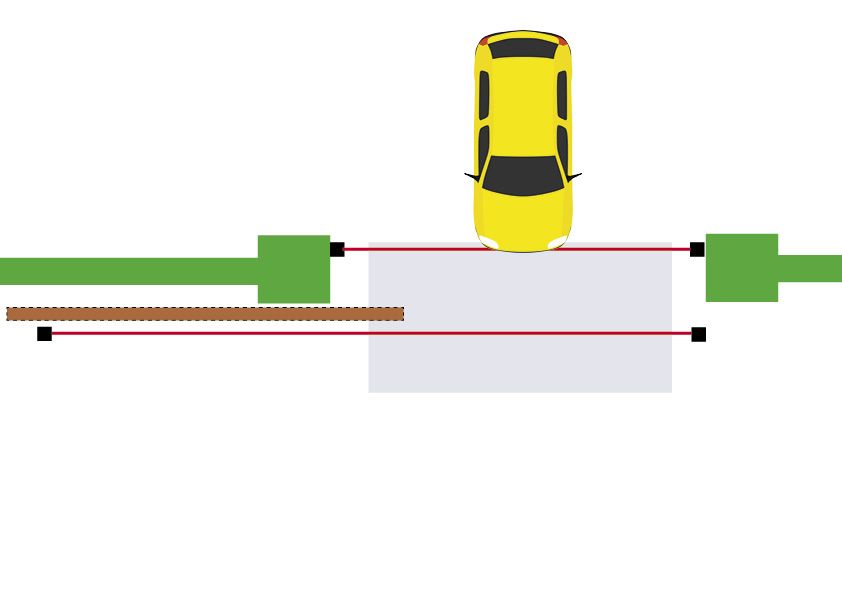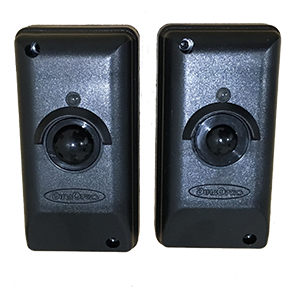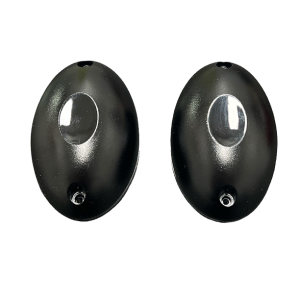Safety Beams for Automatic Gates
Types of Safey Beams
Beam Positioning
When installing photocells, the most critical factor is ensuring that they are accurately facing each other. The transmitter's beam of light is narrow, and if it is not precisely aimed at the receiver, the system may not function correctly. Worse yet, it could work intermittently and stop functioning as soon as it rains, leaving the gate open and creating a safety hazard. Proper alignment of the photocell components is essential for reliable and efficient operation. Additionally, it is crucial to ensure that the installation location is free of obstacles that may block the light beam, such as vegetation or building structures. Taking the time to correctly align the photocell components and choose an appropriate installation location will help to ensure that the system functions correctly and prevents accidents, protecting both people and property.
Proper installation of photocells is crucial for the smooth and safe operation of gate systems. One of the critical factors that affect their performance is the height at which they are installed. If the height is too high, the photocell may not detect low-profile vehicles or empty trailers passing through, while if it is too low, it may detect obstacles such as the ground or rocks and cause the gate to malfunction.
To ensure optimal performance, it is recommended to install photocells at a height of around 600mm from the ground. This height is suitable for most vehicles, including cars, vans, utes, small trucks, and trailers. However, for gates shared by larger trucks, installing two sets of photocells at different heights is advisable. In addition to the first set installed at 600mm, a second set should be installed at 900mm to detect the presence of larger vehicles accurately.
By positioning the photocells at the correct height, gate systems can operate reliably and safely, ensuring the protection of both people and property. Proper installation of photocells is essential, and it is also important to ensure that the photocell components are securely mounted, correctly aligned, and free from obstructions that may interfere with their operation. Regular maintenance and testing of the photocell system will help to ensure that it remains functioning optimally over time.
Swing Gates
When it comes to swing gates, it is essential to have at least two sets of closing photocells for proper coverage. For double swing gates, the distance between the inside and outside sets of photocells is shorter, making them better suited to this type of gate than single swing gates. When installing photocells on a 4m swing gate, it is crucial to ensure that the distance between the photocells does not exceed 4m. This is because if a car stops between the photocells, there is a risk that the gate may close on it. Therefore, it is best to position the photocells as close to the gate as possible to minimize this risk.
In addition to the two sets of closing photocells, it is also recommended to install a third set of opening photocells beyond the gate in the open position. This will prevent the gate from opening on a vehicle if it is parked in the path of the opening gate. If the opening photocell is broken, the gate will not open, thus preventing any potential accidents.
Proper installation and positioning of photocells are essential to ensure that swing gates function safely and reliably. It is also important to regularly inspect and maintain the photocell system to ensure that it continues to function optimally over time. By following these guidelines, swing gate systems can operate safely, protecting both people and property.
A Swing Gate Automation Safety Beam Set Up
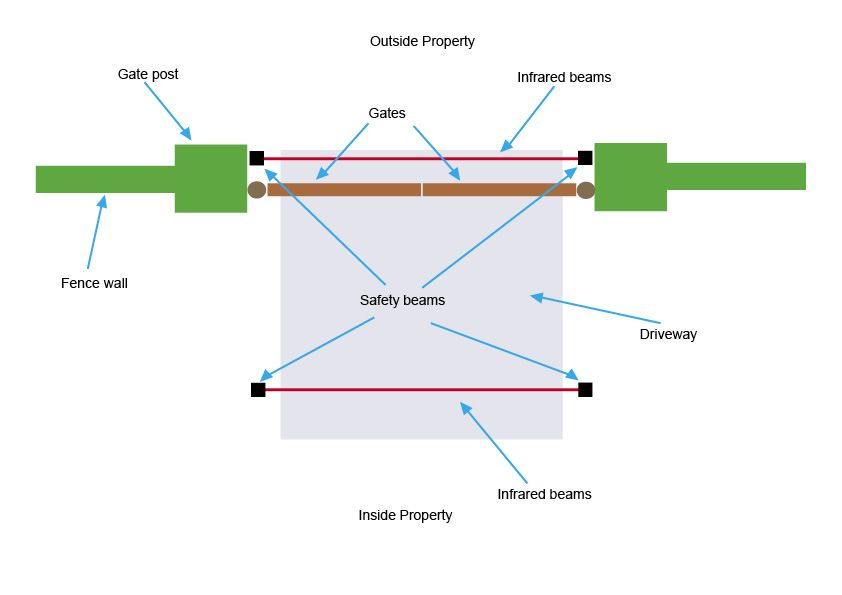
Arriving at Automatic Swing Gates from the Outside

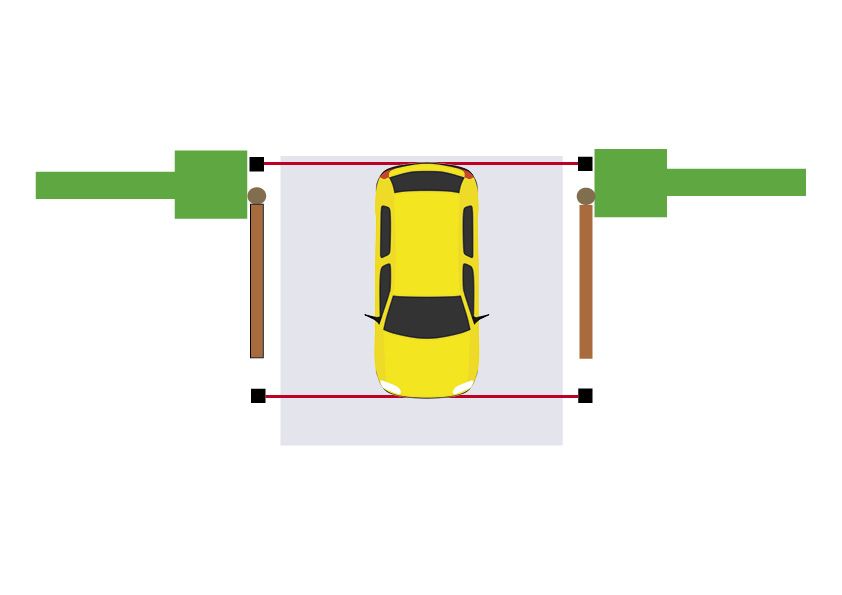
Arriving at Automatic Swing Gates from the Inside
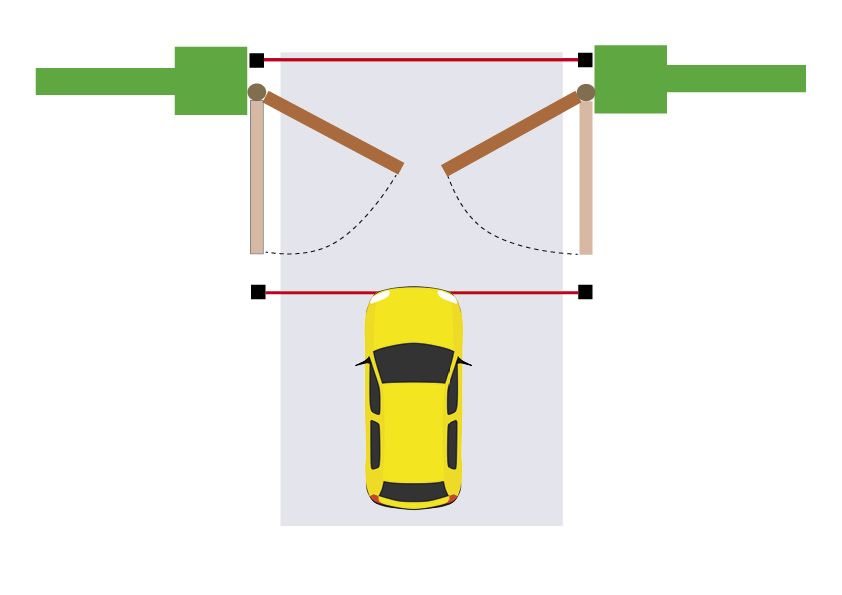
Smaller Vehicles and Pedestrians
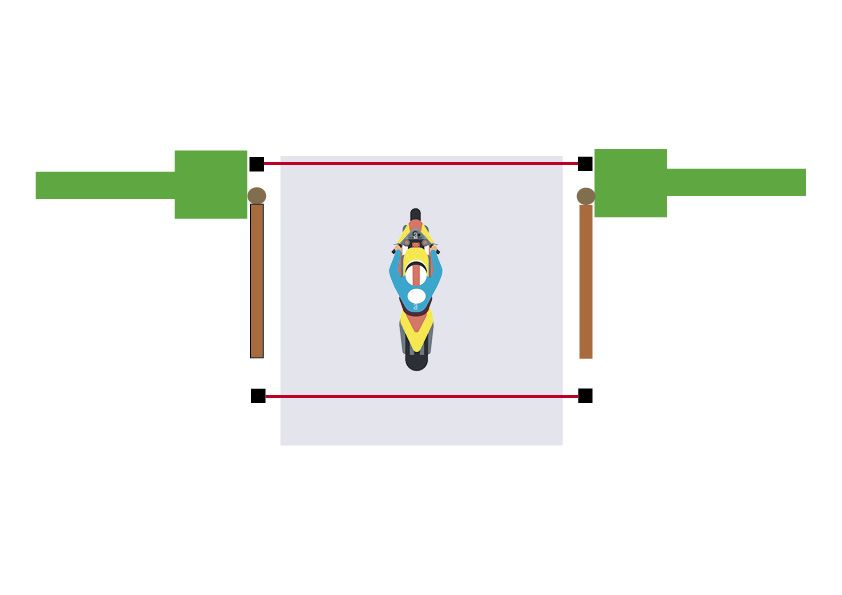
A Slide Gate Automation Safety Beam Set Up
Automated sliding gates slide along the property boundary when opening. Ideally, safety beams should be installed along the full travel path of a sliding gate.
To prevent the risk of shearing and trapping injuries, it is crucial to ensure that safety photocells are installed on the inside of the gate. These photocells should be able to detect the full travel of the gate and stop it from moving if someone enters the danger area, such as when the gate slides against walls, posts or open railings. By installing safety photocells, the gate system can ensure the safety of individuals and prevent any accidents or injuries that may occur from gate movement. It is essential to take into account all potential hazards when installing a gate system and implement necessary safety measures to prevent any incidents.

